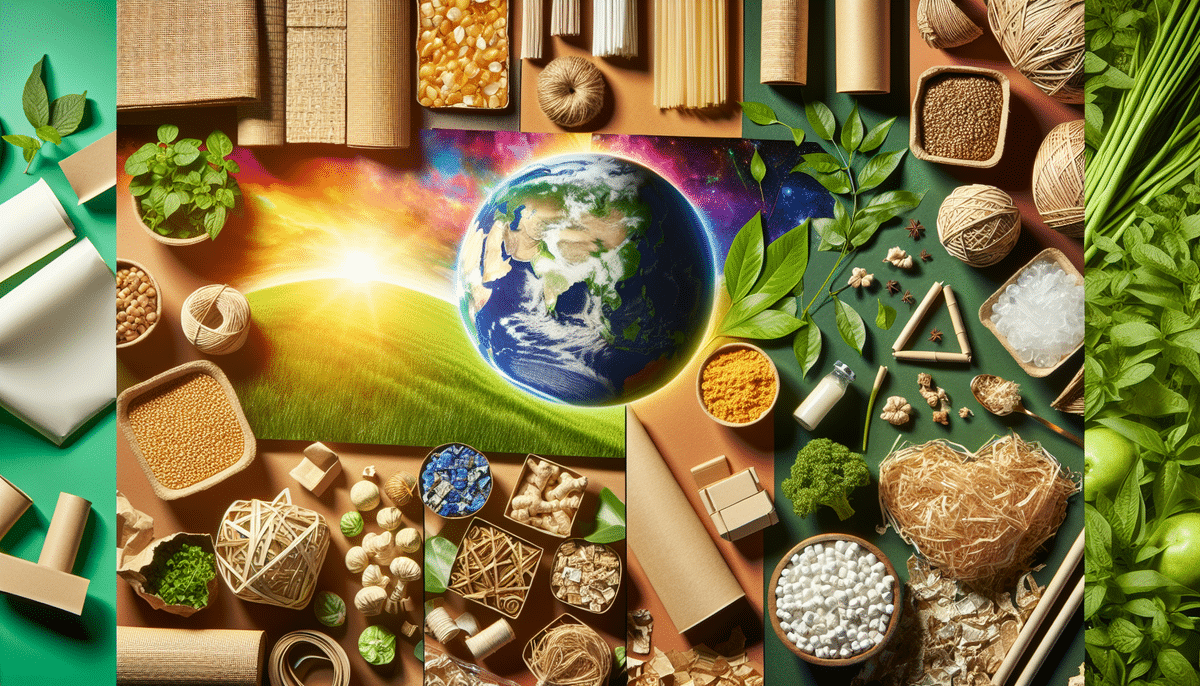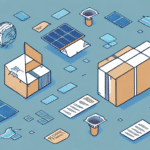Exploring Sustainable Packaging Solutions for a Greener Future
In recent years, the issue of sustainable packaging has become increasingly important to our society. As we continue to recognize the impact our actions have on the environment, more individuals and industries are seeking ways to reduce their carbon footprint and promote a greener future. This has led to a growing interest in sustainable packaging solutions, which aim to minimize the environmental damage caused by the packaging industry. In this article, we will explore various aspects of sustainable packaging, from its importance to the different materials and designs currently in use.
Why Sustainable Packaging is Important for the Environment
Sustainable packaging is crucial for the environment for several reasons:
- Waste Reduction: It reduces the amount of waste that ends up in landfills and pollutes our oceans. Traditional packaging materials that are not biodegradable or compostable can take hundreds or even thousands of years to break down, causing long-term environmental damage.
- Greenhouse Gas Emissions: Sustainable packaging helps to reduce greenhouse gas emissions. Many conventional packaging materials, such as plastic, are derived from fossil fuels and require significant energy to produce. By switching to sustainable materials and designs, we can lower energy consumption and reduce carbon emissions.
- Renewable Resources: Sustainable packaging promotes the use of renewable resources. Materials like bamboo, hemp, and cornstarch are derived from renewable sources that can be replenished over time, reducing our reliance on non-renewable resources like oil and gas.
According to a report by [Smithers](https://www.smithers.com), the global sustainable packaging market is expected to reach $440.3 billion by 2025, highlighting the growing commitment to eco-friendly solutions.
The Negative Impact of Non-Sustainable Packaging on the Earth
Non-sustainable packaging has a significant negative impact on the Earth:
- Environmental Pollution: Traditional packaging materials are often made from fossil fuels, contributing to environmental degradation. These materials frequently end up in landfills or oceans, where they can harm wildlife and ecosystems.
- Resource Depletion: The production of non-sustainable packaging consumes large amounts of energy and resources, leading to the depletion of natural resources and increased greenhouse gas emissions.
- Health Hazards: The toxic chemicals released during the production and disposal of non-sustainable packaging can cause respiratory problems, cancer, and other health issues.
Fortunately, there are sustainable alternatives available, such as biodegradable, compostable, and recyclable materials made from renewable resources. By choosing these options, we can reduce our carbon footprint and protect the planet for future generations.
Sustainable Packaging Solutions for Different Industries
Sustainable packaging solutions are adaptable across various industries:
- Food and Beverage: Biodegradable and compostable materials can replace traditional plastic containers and wrappers, reducing waste and pollution.
- Cosmetics and Personal Care: Refillable containers and packaging made from recycled materials are becoming standard, appealing to environmentally conscious consumers.
- Fashion: Brands are using biodegradable materials like cornstarch and recycled paper for packaging, as well as innovative designs such as reusable garment bags and storage containers.
For example, [Patagonia](https://www.patagonia.com) uses biodegradable bags made from plant-based materials, while [Dell](https://www.dell.com) has implemented a closed-loop recycling program to create new products from old materials.
The Benefits of Using Biodegradable and Compostable Materials in Packaging
Biodegradable and compostable materials offer numerous benefits:
- Environmental Impact: These materials break down quickly and safely, reducing landfill waste and pollution.
- Renewable Resources: Produced from renewable resources like cornstarch, sugarcane, and potato starch, they help decrease dependence on fossil fuels.
- Cost Efficiency: Often lighter than traditional packaging, they can reduce shipping costs.
- Consumer Appeal: Eco-friendly packaging attracts environmentally conscious consumers and helps companies meet sustainability goals.
According to the [Environmental Protection Agency (EPA)](https://www.epa.gov), transitioning to compostable packaging can significantly lower greenhouse gas emissions and support sustainable waste management practices.
Innovative Sustainable Packaging Designs for Eco-Friendly Brands
As sustainability gains importance, many brands are developing innovative packaging designs:
- Recycled Materials: Using recycled content to create unique and eye-catching packaging.
- Reusable Packaging: Designing packaging that can be repurposed, such as refillable containers and multifunctional boxes.
- Smart Packaging: Incorporating technology to monitor expiration dates and freshness levels, helping reduce food waste.
Brands like [Lush Cosmetics](https://www.lush.com) use knot-wraps made from recycled plastic bottles, and [Patagonia](https://www.patagonia.com) employs biodegradable materials to enhance both functionality and visual appeal.
How to Implement a Sustainable Packaging Strategy in Your Business
Implementing a sustainable packaging strategy involves several key steps:
- Assess Current Packaging: Review existing packaging to identify areas for improvement, such as switching to biodegradable or compostable materials.
- Collaborate with Suppliers: Work with suppliers to source sustainable materials that meet your business needs.
- Educate Stakeholders: Train employees and inform customers about sustainable practices and the benefits of eco-friendly packaging.
- Monitor and Adjust: Regularly evaluate your sustainability efforts, track progress towards goals, and stay updated on new technologies and practices.
By actively involving employees and customers in sustainability initiatives, businesses can foster a culture of environmental responsibility and make meaningful progress towards reducing their environmental impact.
The Role of Consumer Education in Promoting Sustainable Packaging
Consumer education is vital in promoting sustainable packaging:
- Awareness: Educating consumers about the environmental benefits of eco-friendly packaging encourages informed purchasing decisions.
- Labeling: Clear labeling indicating whether packaging is recyclable, biodegradable, or made from recycled materials helps consumers make sustainable choices.
- Engagement: Partnering with non-profit organizations and using marketing strategies to highlight sustainability efforts can enhance consumer engagement.
Effective labeling can provide consumers with necessary information, such as the carbon footprint of packaging, enabling them to understand the impact of their choices on the environment. According to [Nielsen](https://www.nielsen.com), 73% of global consumers say they would definitely or probably change their consumption habits to reduce their environmental impact.
Challenges and Opportunities in Implementing Sustainable Packaging Solutions
While sustainable packaging offers many benefits, there are challenges to its implementation:
- Cost: Sustainable materials can be more expensive than traditional options.
- Technology: Specialized equipment or processes may be required to produce sustainable packaging.
- Industry-Specific Issues: Certain industries may find it difficult to find suitable sustainable packaging solutions.
However, these challenges also present opportunities for innovation. Companies can invest in research and development to discover new materials and technologies that make sustainable packaging more affordable and accessible. Collaboration across industries can also lead to the creation of standardized sustainable practices, further promoting environmental responsibility.
A Look at Successful Case Studies of Companies Embracing Sustainable Packaging
Several companies have successfully implemented sustainable packaging strategies:
- Nestlé Waters North America: Committed to using 100% recycled plastic in its bottled water products by 2025.
- Lush Cosmetics: Utilizes knot-wraps made from recycled plastic bottles for packaging its products.
- Patagonia: Launched the Common Threads Initiative, encouraging customers to repair, reuse, and recycle their products. They also use biodegradable bags made from plant-based materials.
- Dell: Implements a closed-loop recycling program, reusing materials from old products to create new ones and developing packaging from sustainable materials like bamboo and mushrooms.
These case studies demonstrate how commitment to sustainability can lead to innovative packaging solutions that benefit both the environment and the company’s brand reputation.
Key Trends and Future Directions in Sustainable Packaging
Staying ahead in sustainable packaging involves keeping up with key trends and anticipating future developments:
- New Biodegradable Materials: Ongoing research is leading to the development of more efficient and cost-effective biodegradable packaging materials.
- Recycled Materials Innovation: Utilizing recycled materials in novel ways to enhance durability and functionality.
- Refillable Packaging: The rise of refillable packaging options reduces single-use packaging waste.
- Technological Advances: Innovations such as smart packaging that monitors product freshness can further reduce waste and improve sustainability.
As technology advances, the possibilities for sustainable packaging continue to expand, offering new solutions that were previously unimaginable.
Collaboration and Partnership Opportunities for Sustainable Packaging Initiatives
Collaboration and partnerships are essential for successful sustainable packaging initiatives:
- Industry Partnerships: Companies can work together to share resources, knowledge, and technologies that promote sustainability.
- Non-Profit Collaborations: Partnering with non-profit organizations can enhance sustainability efforts and increase community engagement.
- Government and Policy Support: Collaborating with government entities can help create supportive policies and regulations that encourage sustainable packaging practices.
By leveraging each other's strengths and resources, businesses and organizations can drive meaningful change and accelerate the adoption of sustainable packaging solutions.
Overall, sustainable packaging is a critical issue that requires our attention and action. By exploring the different aspects of sustainable packaging, we can better understand its impact on the environment and society, and find ways to promote a greener future. Whether you are a business owner, a consumer, or simply someone who cares about the environment, there are many ways to get involved and make a positive impact. Let's work together to explore sustainable packaging solutions and create a better world for future generations.




















